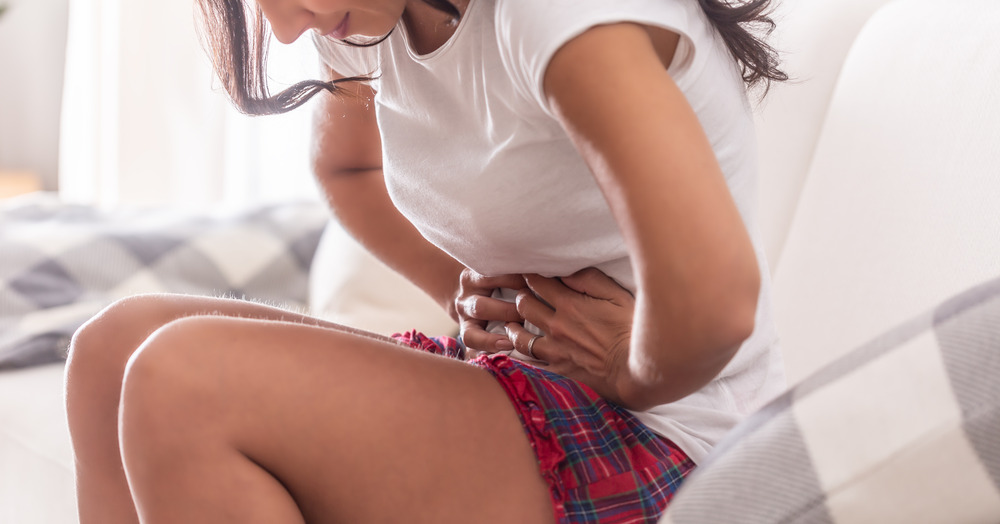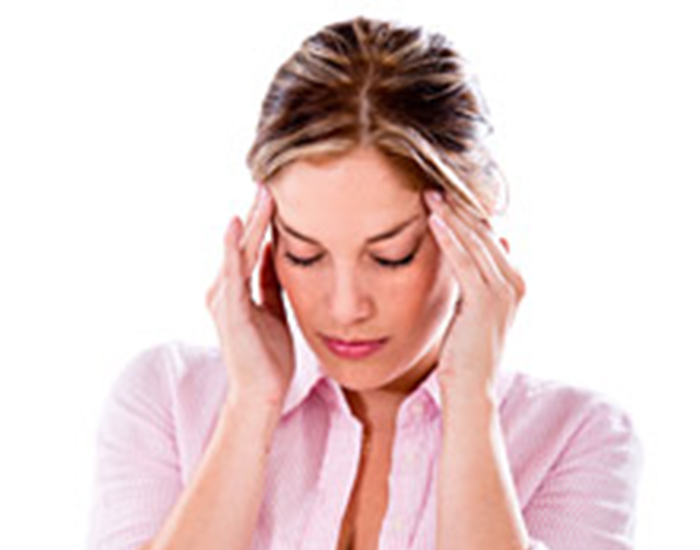Acupuncture points and meridians are a core idea within acupuncture theory. Understanding these concepts is essential for anyone interested in acupuncture or traditional Chinese medicine.
In this blog post, we will explore the basics of acupuncture meridians and points, how they relate to each other, and how they can help to promote better health and wellbeing.
Acupuncture Meridians
The fundamental theory in acupuncture and Chinese medicine is that the body is connected by acupuncture meridians, also referred to as channels. This is the basic acupuncture anatomical architecture through which disease imbalances are diagnosed and treated.
Acupuncture meridians are believed to be connected to various organs and systems in the body and play a vital role in the flow of Qi, or vital energy. They work together to maintain the balance of Qi throughout the body. The acupuncture channels start at the surface of the body. Then delves deep into the body to connect with the organs. Acupuncture channels are three dimensional, with qi flowing through them.
Each meridian has a specific pathway. The have specific acupuncture points along, each of which has a specific healing function. Stimulating these points restores the balance to the flow of Qi, which can in turn help to alleviate a wide range of physical and mental health conditions.
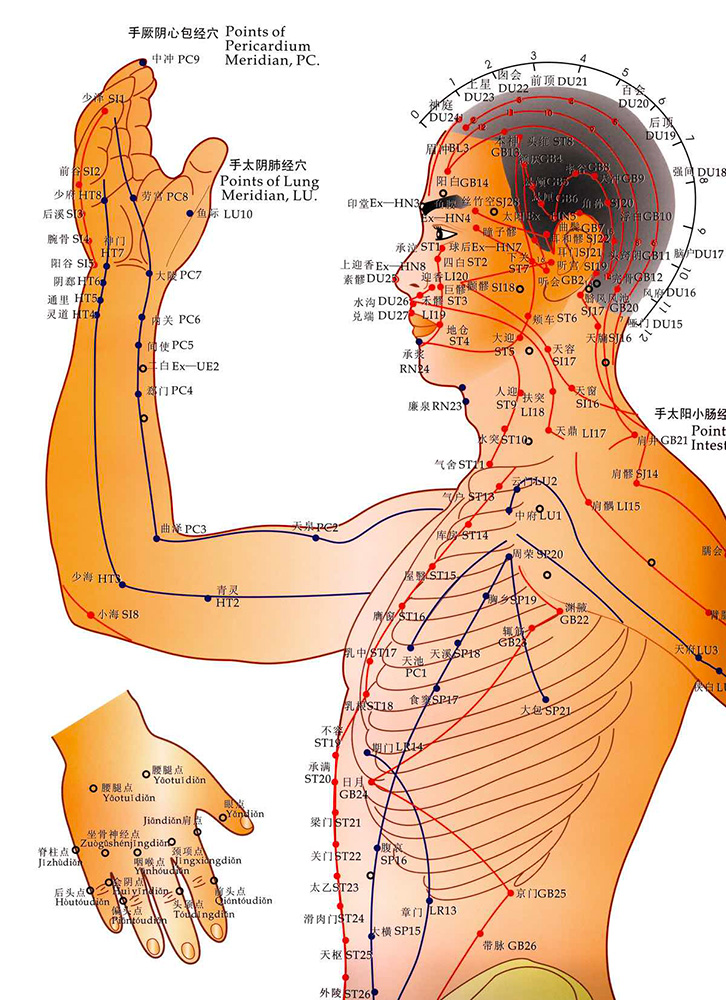
I like to think of the acupuncture channels as an map of the body to address pain and dysfunction in specific areas. When we locate the area of the pain or dysfunction, I will determine which acupuncture channel is effected and create a treatment that will address the acupuncture points for that specific channel.
Acupuncture channels connect different parts of the body and run along different places in the body. The acupuncture channels create a type of map that interconnects different regions of the body.
The acupuncture points I select focus on the most effected acupuncture channels as a way to target specific pain or illnesses in the body. For example, the Gall Bladder channel runs from the toes, along the sides of the body, and then to the sides of the head. When there is pain on the side of the body or one sided headache, would uses the acupuncture points along the Gall Bladder channel to correct this imbalance.
Another good example is Large Intestine 4. The Large intestine channel starts on the hand and travels along the arm to the face. Frontal headaches and face pain can be treated with this very important acupuncture point.
Five Functions of Acupuncture Meridians
The meridians have specific functions in maintaining health. They help to
- Interconnect and integrate the body
- Allow for circulation of qi, body’s energy, and blood
- Protect the body from disease
- Bring qi to a diseased area of the body
- Are used to treat illness by returning balance
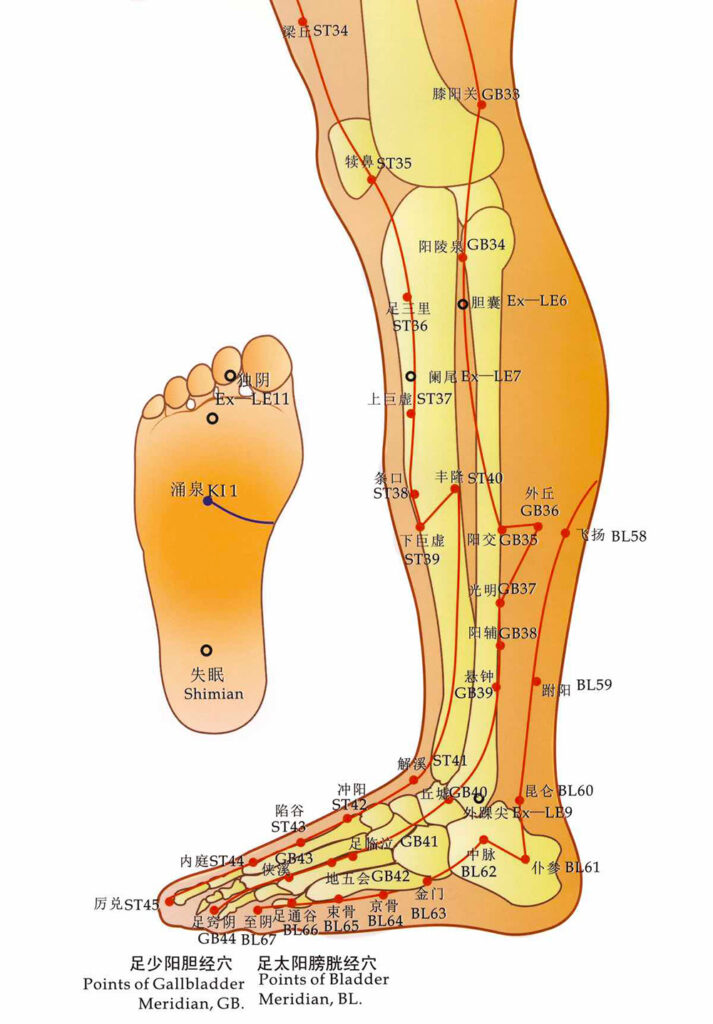
The 12 Primary Meridians
“It is by virtue of the twelve channels that human life exists, that disease arises, that human beings can be treated and illness cured. The twelve channels are where the beginners start and the masters end. To beginners it seems easy; the master knows how difficult it is.”
Spiritual Pivot Chapter 17, Quoted from A Manual of Acupuncture.
In traditional Chinese medicine, there are 12 primary meridians, each of which is associated with a specific organ or system in the body. There are also eight extra meridians, which are not associated with specific organs but are instead believed to regulate the flow of Qi throughout the body.
The 12 primary meridians are:
- Lung meridian: This meridian runs from the chest to the thumb and is associated with the respiratory system. The lung is also associated with production of Qi.
- Large intestine meridian: This meridian runs from the index finger to the face and is associated with excess and blocked qi in the body. It is also useful for treating headaches.
- Stomach meridian: This meridian runs from the face to the foot and is associated with the digestive system and immune system.
- Spleen meridian: This meridian runs from the foot to the chest and is associated with the digestive and immune systems. The spleen is responsible for extracting Qi from food we eat.
- Heart meridian: This meridian runs from the chest to the little finger and is associated with the circulatory system as well as emotions and spirit.
- Small intestine meridian: This meridian runs from the little finger to the face and is associated with the digestive system. It is very useful meridian for pain in the neck and lower back.
- Bladder meridian: This meridian runs from the head to the foot and is associated with the urinary system. This is the longest meridian and can be used for many types of pain as well as draining heat from the body.
- Kidney meridian: This meridian runs from the foot to the chest and is associated with the urinary and reproductive systems.
- Pericardium meridian: This meridian runs from the chest to the middle finger and is associated with the circulatory system. This meridian runs along the median nerve. Acupuncture here is very important for relieving morning sickness and nausea. Also these points are useful for treating carpel tunnel syndrome.
- Triple burner meridian: This meridian runs from the hand to the face. This organ the space between other organs and the ability for the body to communicate with itself.
- Gallbladder meridian: This meridian runs from the head to the foot and is associated with the gallbladder organ. It can be used to address any issues on the sides or flank of the body. Points are also very effective for sciatica.
- Liver meridian: This meridian runs from the foot to the chest and is associated with the liver organ. The liver is responsible for the free flow of qi. Stress, trauma, and injury may cause the Qi to slow down and get stuck. This is called Qi stagnation. Liver points are very useful for treatment of Qi stagnation.
In addition to the 12 primary meridians, there are eight extra meridians, including the conception vessel, the governing vessel, the dai (belt) vessel, and chong mai vessels. These extra meridians regulate the flow of Qi throughout the body and help to maintain balance and harmony. The governing and conception vessel both have acupuncture points on them and are useful for back pain, pelvic pain, urinary issues, and enhacning fertility.
Now that we’ve covered an introduction to the channels, let’s look at what acupuncture points are.
What Are Acupuncture Points?
Acupuncture Points are regions of the body that the qi is more accessible to the surface. We like to say they are places where the Qi is more accessible.
Each point has a specific healing action such as moving the qi in the digestive system, stimulating production of reproductive qi, or sometimes it will focus on a specific region of the body. For example, the lung meridian runs from the chest to the fingertips and is associated with the respiratory system. Stimulating the acupuncture points along this meridian may help to improve respiratory function and treat conditions such as asthma or bronchitis. By elegantly combining the points, the skilled practitioner helps to balance the body and promote self healing.
Acupuncture points are also believed to have different functions and effects on the body. For example, some points may be used to promote relaxation and reduce stress, while others may be used to increase circulation and promote healing. Some points may be used to treat specific symptoms, such as headaches or nausea, while others may be used to treat more general health issues, such as digestive problems or chronic pain.
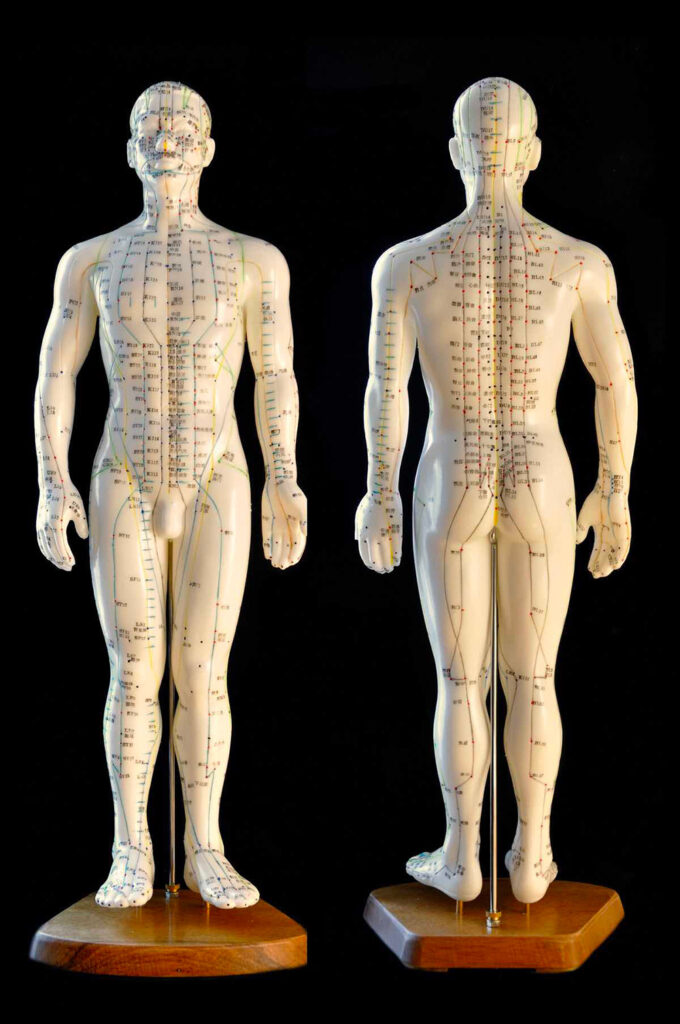
Acupuncture points are typically stimulated using fine, sterile needles, although other techniques such as acupressure, moxibustion (the burning of dried herbs on or near the skin), or cupping (the use of suction cups on the skin) may also be used. The needles are left in place for a period of time, typically between 10 and 30 minutes, during which time the patient may feel a dull ache or tingling sensation.
How to find acupuncture points
The location of each acupuncture point is based on anatomical landmarks, such as bones, muscles, and tendons. People’s body sizes vary, which is why when you a measuring for acupuncture points, the measurements are specific to each person’s body. Acupuncture points are measured from physical landmarks. Often a cun (pronounced “soon”) or body inch is used.
One cun is the width of your thumb at the knuckle. Three cun is equal to the index, middle, ring finger, and pinky measured together.
The acupuncture points can be felt very deep or shallow depending on the body part and symptom being treated.

Science Behind Acupuncture Points
Acupuncture points are often found in areas where there is a high concentration of nerve endings, blood vessels, and lymphatic vessels, which may explain why stimulating these points can have a therapeutic effect. Acupuncture points have also been shown to have lower electrical resistance than other areas of the body. Stimulating specific acupuncture points vs. area that are not acupuncture points has been shown to stimulate pain relieving parts of the brain.
How to Create an Acupuncture Points Prescription
As an acupuncturist, I will determine the imbalance through the intake and examination. The I create a customized acupuncture prescription to target the underlying root cause of the issue. For example, if the disease is caused by Qi stagnation, lack of circulation of the Qi, I would choose points to stimulate the movement of Qi and break up stagnation. But if there is underlying Qi deficiency, I would choose points to boost the body’s Qi.
Acupuncture can target chronic pain in any location of the body. Sometimes, I will use needles directly in the location of the pain.
But other times an acupuncturist will place needles far away from the location, such as in acupuncture points on the legs and feet when treating a headache.
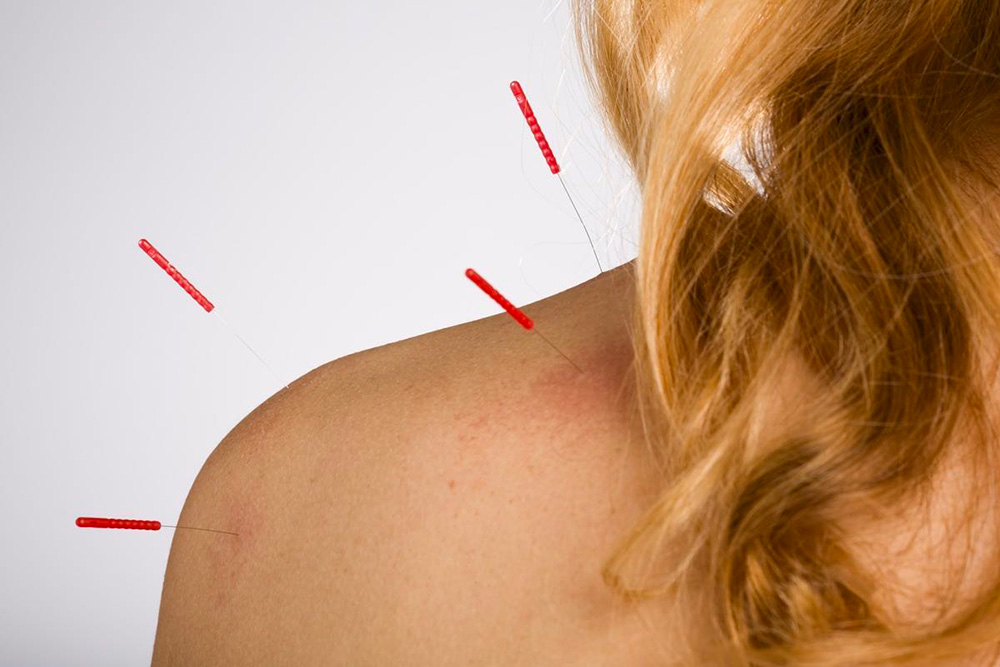
Additionally, I will think about the location of the pain and discomfort and select points along that specific channel. As I mentioned before, the acupuncture channels create a type of map that interconnects different regions of the body.
For example, when treating headaches we will think about the location of the pain. Is it a frontal headache? Is it on the sides of the head? The Large Intestine acupuncture channel starts on the hand, up the forearm, through the shoulder to forehead, sinuses, cheeks, and face. This is why LI 4 on the hand can be very effective for frontal and sinus headaches.
On the other hand, the Gall Bladder channel runs from the toes, along the sides of the body, and then to the sides of the head. This is why Gall Bladder 34 near the knee can be effective for headaches on the side or temples.
Ouch Acupuncture Points (AKA Ashi Points)
Acupuncturists will also search out for specifically painful areas at the location of the pain. In Chinese these are called ashi points which translates to mean “ouch points.” Often, they may also be referred to as trigger points. Acupuncture will help to release these areas of pain to relax the muscle, disentagle fascia, increase circulation, and reduce pain.
I also may use a specific points because I know that it is clinically effective. For example, using PC 6 acupuncture point for nausea has been shown time and time again to reduce many types of nausea. Because we know this works through clinical experience, we call this an empirical point.
Auricular acupuncture
Auricular acupuncture, or ear acupuncture, is very effective for chronic pain, hormone imbalances, and chronic stress. The ear lobe provides a map of the body with points for targeting specific areas and organs.
The best way to target the chronic pain is to find the most sensitive points in the ear for that region and place the needle in that acupuncture point.
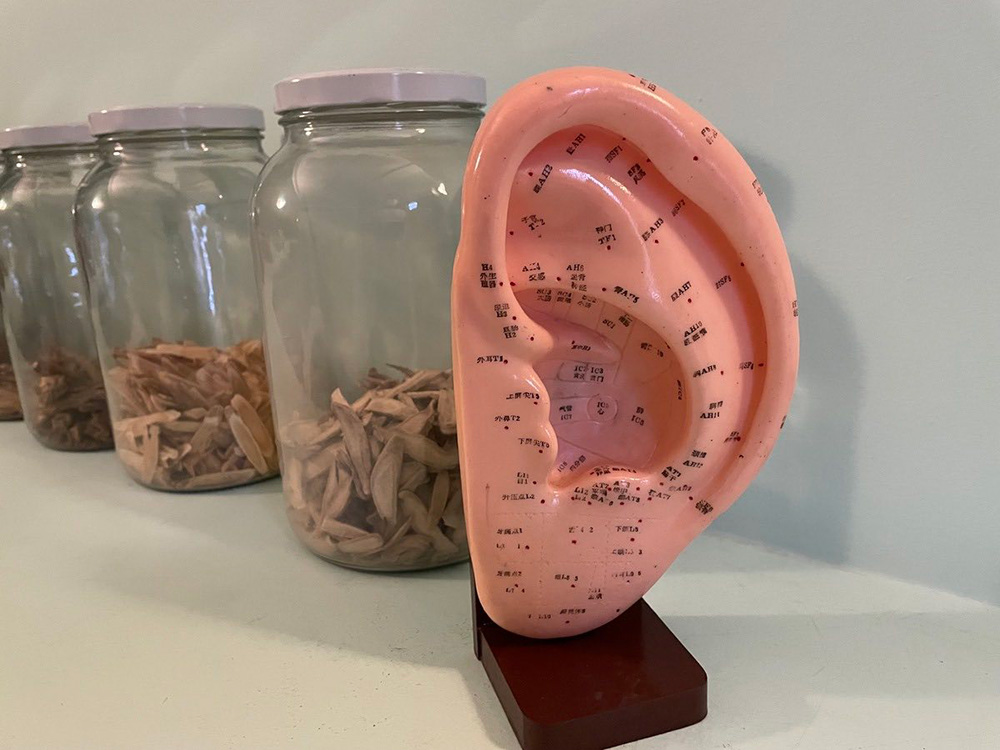
Is the Treatment Always the Same?
I find that acupuncture is most effective by changing the focus of the treatment overtime. At first, we may focus on releasing tension in the muscles, this is called moving qi and blood stagnation. But over time it may become more important to focus on boosting up the qi to consolidate the effects of the treatment and support the overall health.
Acupuncture points and Meridians are at the core of the practice. Acupuncture points are specific locations on the meridians that are used are used as a means for healing. Research has show that acupuncture points are different from other areas because they are located close to nerve bundles and have lower electrical resistance. These areas are easier to access the Qi and stimulate the healing of the body. The acupuncture treatment will be customized to each person based upon their underlying imbalance and location of the condition. Targeting the underlying imbalance to for long term healing.


